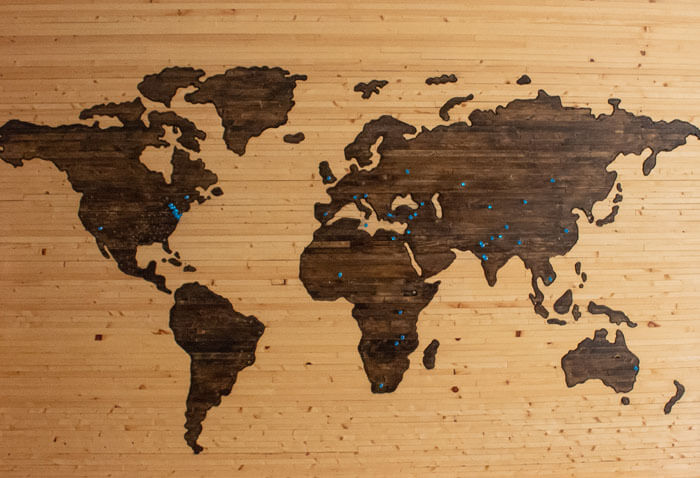Multilingual Websites: Ways to Make a WordPress Site Multilingual

Companies are recognizing their diverse audiences and a need to reach them with personalized content. I see more companies investing in their global reach, with an effort to support multiple languages in the website content. With WordPress being a leading platform for websites, it seems fitting to explore all the ways that you can support multiple languages with WordPress. Here are some approaches for multilingual websites.
Using Google Translate (Or, Maybe Not)
Unfortunately the once easy to insert Google Translate widget is no longer supported. It was deprecated in August 2019.
But Google still has a Cloud-based API solution for languages.
This may open some interesting opportunities for web developers, assuming Google will still continue to grow its machine-based translations. Google seems to be structuring the usage of this API like their maps and others, with a billing profile now required. I recommend reading up on the billing requirements before delving deep.
If you want to tackle this integration, it will require an experienced developer to work with the API and implement it to a site.
There are some newer plugins available for WordPress such as TranslatePress that are using this technology. This might make the job easier, but it seems to still require using your Google account. If you have a fair amount of traffic that will send calls to the API, expect a bill.
Using WPML and Multi-Site Setup
A popular and leading solution, WPML allows you to create an organized system of language sections and translated content in your WordPress. This solution is best for companies who will provide the translated content, rather than relying on a robot to auto-translate.

Map Concept Photo by Brett Zeck on Unsplash
With WPML, you can easily organize and track each language version of each Page or Post. It can also support your SEO efforts in several languages.
Corporations that prefer to have professionally translated content for their employees and customers may prefer this approach. Robot-translated content might be too prone to errors or might not properly communicate the brand.
WordPress also supports a multi-site setup option. This means that you can have secondary websites below your main domain that are intended for different audiences. You can create a different version of your website for each language, each with a unique URL structure (like: mysite.com/es/ or mysite.com/fr/).
Creating Multilingual Websites with Custom Themes
This is an approach to using the capabilities of WordPress and keeping different versions of content organized. It doesn’t require any fancy plugins, but it does involve a little custom theming. I used this method for many years, before WPML was popularly available.
The approach involves:
- Working with your custom theme files
- Creating different menus for each language
- Creating pages for different versions of your content
For example, these might be the steps:
- Create an English Menu and a Spanish Menu.
- Create 2 copies of your header.php file, the 2nd file being the 2nd language. Maybe it is called header-spanish.php and includes the ID for the Spanish menu.
- Create 2 Page Templates, one for each language. Each template should call the appropriate header file.
- Create 2 copies of each Page, one version for each language. Assign the related template to the page.
- Don’t forget to add a link in your menu or header to allow users to go back and forth to the other language. I liked to add a small flag icon that linked to the homepage for each language.
Here is an article from 2011 where I described this approach for custom theming and multiple languages. WordPress versions have evolved, but the method is still possible.
Setting Up Separate Sites for Each Language
And finally, you may choose to invest in building a completely independent website for each region. Some companies have a “main” site in English that serves North America and English-speaking countries, while they have a separate site for Chinese.
There are even services that offer to create different proxy websites with translated content for you. This may be popular for a large company with employees on different continents. While it may seem like a lot of work to maintain multiple websites, it also gives each region full control over the design and content personalization. Each website can be tailored to the audience’s unique culture.
Is your organization planning to expand content into multiple languages? Share some comments about your approach!
Posted in: Austin Web Design, WWW Learning Center
Comments are closed.
Latest & Greatest
- Web Design Approaches to Login Page Design
- Unlocking the Power of User-Generated Content
- Beyond Pretty Pictures: Why Solid Web Design Matters (More Than You May Think)
- Getting Creative with Your 404 Not Found Page Design
- Web Design Solutions: Which Option Is Right For You?
- Maximize Your Site Redesign Budget: What Texas Web Developers Need From You for a Cost-Effective Collaboration
- Responsive Web Design in Austin: Why It Matters For Your Local Business
